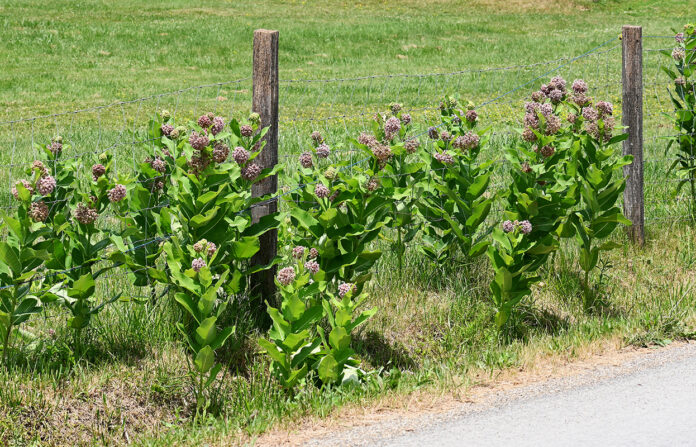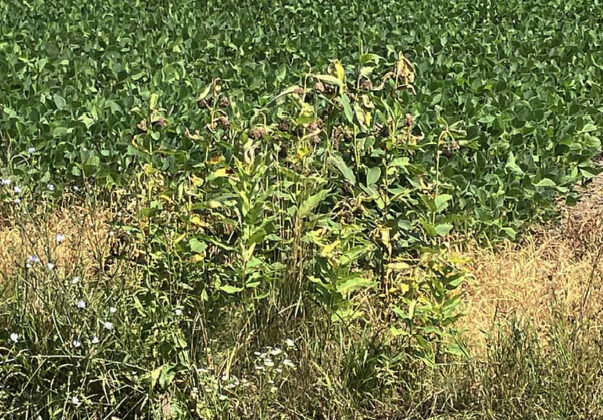
I have yet to spot a monarch butterfly this year despite the fact that I usually see my first one flitting around in late May or early June.
The monarch is unique among insects. Throughout the summer months, there are several generations that are produced, the local population increasing in numbers with each one. By the time the final generation emerges, it is late summer, the nights are cooler, the days shorter. This generation, its reproductive organs dormant, has been programmed by Mother Nature to depart on an epic migration, thousands of miles south, taking it to just a handful of unique locations in the mountains of central Mexico. It is here where all monarchs east of the Rocky Mountains arrive by the millions and rest in the trees throughout the winter months, the temperature and humidity in these pockets are a perfect recipe for their overwintering success.
As spring approaches and the air begins to warm, the butterflies become active, mate and begin winging their way north again, producing new generations that continue the journey until the continent is again populated by the species.
A bleak future

Yet, scientists predict that this migratory population of monarchs will soon become extinct, victims of climate change and habitat loss. Since their overwintering sites in the Mexican mountains were discovered in 1975, monarchs have become one of the most studied insects on the planet and, as their story unfolds, their future could not be any bleaker. Sadly, the monarch population has plummeted by 90% in the past 20 years and one of the main contributing factors for this decline has been the loss of milkweed.
The monarchs’ struggle is twofold, half occurring on the overwintering sites, and the other half on its breeding grounds. Logging in the Mexican forests has wiped out many of the remaining sites and freak weather events due to climate change have decimated entire colonies of millions in a single incident.
Yet the challenges monarchs face on their breeding grounds are far more disastrous. You see, other species of butterflies have the ability to utilize several different types of plants on which to lay their eggs; monarchs have one and only one — milkweed.
Milkweed

There are over 100 different species of milkweed throughout the monarch’s breeding grounds and each species is native to its particular area and habitat. Only species within the genus Asclepias are favored by monarchs that deposit their eggs on the leaves which, in turn, supply life-giving nourishment to their caterpillars once they hatch.
As the monarchs depart Mexico and begin their journey north, they encounter these different species of Asclepias milkweed along the way. Eggs are deposited on these plants, and after the adults perish, the caterpillars mature and continue the northward journey with these milkweeds fueling their movements to the farthest reaches of their breeding grounds.
Here in northeast Ohio, there are two species of milkweed native to this particular area, common milkweed (Asclepias syriaca) and swamp milkweed (Asclepias incarnata). Of the two, common milkweed plays the largest role in the monarch’s breeding success.
Growing up to 4 feet in height, common milkweed has large, broad leaves and a straight, strong stem that terminates in an impressive display of ball-shaped blossoms. Colored in purple and pink, the intricate flowers exude a captivating fragrance and produce copious quantities of nectar that attract a host of different pollinators including butterflies, moths, bees and beetles to name a few.
Milkweed gets its name from the milky latex that drips freely from the stems or the leaves if the plant is picked or damaged. This sap contains copious quantities of cardiac glycosides that are toxic to large animals. Livestock, however, seem to naturally sense this and avoid them in their pastures. Interestingly, as the monarch caterpillars consume the milkweed leaves, these compounds build up in their bodies, making them toxic and bitter throughout every stage of their lives. A predator only needs to eat a monarch caterpillar or butterfly once to learn a valuable lesson in its future cuisine.
Despite its name, milkweed is only a “weed” when it is growing in a location where you don’t want it. Common milkweed does well in many situations, adapting to dry, well-drained soils in sunny locations. It spreads by rhizomes, the size of the patch increasing every year. Sadly, the number of milkweed patches is drastically declining due to development (residential, stores, factories) and the ever-increasing use of herbicides along roadways, pastures and croplands where common milkweed most often grows.
One of the most customary areas where common milkweed persisted profusely was in and around the edges of agricultural fields. These plentiful patches provided monarchs with safe havens where they could lay their eggs and fuel up on nectar.
With the invention of genetically modified crops, corn and soybeans are now tolerant to herbicides, allowing the farmer to spray them directly with glyphosate resulting in no ill effects. While the crop itself remains unscathed, all other plants between the rows and around the edges of the fields are wiped out, saving the farmer valuable time which would otherwise be taken up by tilling. According to the University of Kansas’ Monarch Watch; “Widespread adoption of herbicide-resistant corn and soybeans has resulted in the loss of more than 100 million acres of monarch habitat in recent years.”
Help the monarchs

The loss of milkweed is no joke. As monarchs travel across their breeding grounds, the sparsity of milkweed results in fewer locations for monarchs to fuel up with life-giving nectar. Without milkweed, monarchs have nowhere to lay their eggs, resulting in the loss of valuable generations. The monarch butterfly and its epic migration to Mexico has become one of the world’s greatest wonders. It’s hard to imagine a world without them.
You can help by planting milkweed in your gardens. Although there are many species available on the market, be mindful to resist temptation and only plant those species found in your areas. In addition, be careful to mow around patches of milkweed that are growing along fencerows or areas where they can be left alone to flourish. By protecting milkweed, you are playing a huge role in the monarch’s struggle to exist. It seems like the words monarch and milkweed go hand in hand these days. I guess that’s because without milkweed there are no monarchs.

















Good morning Tami. Long time F&D subscriber here. Look forward to your column each week. Maybe you could do a column on the fisher cat sometime. Rob in Butler Co Pa
I don’t understand why everyone loves Monarchs and not other insects….they treat the Monarchs like the best butterfly ever and don’t want to help the other insects or raise them or view them also as important, only Monarch because it could be extinct why not like and spred awareness to all of them…?